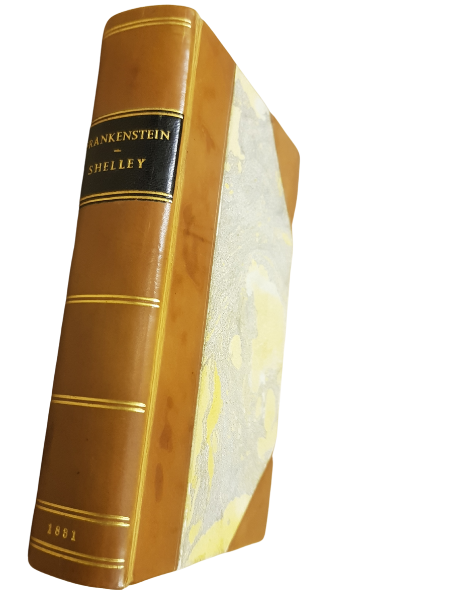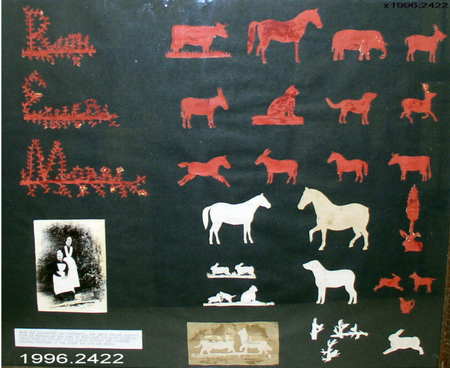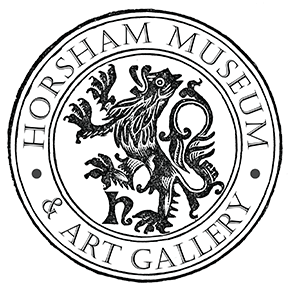
Horsham Museum Curator, Nikki Caxton discusses her top 5 objects in the collection. Joining the museum in August 2021, her favourite objects constantly shift as she discovers new artefacts in the collection.
This week, the curator gave us an insight into her favourite objects in the museum; here's her top five from our collection.
Late Medieval Signet Ring , on display in the Medieval Gallery
Half of the ring is missing, but what remains shows a small animal (possibly a mouse) being held in the talons of an owl. Above the image is the inscription ‘aies pitee’ meaning have pity. There are other examples of rings from this time with a similar scene and inscription and it is believed to have been an allegory for being ‘caught’ by their beloved. The ring is designed for the image to be used as a seal, so it is hard to make out when looking at the object as it is an inverse image. The finder of the ring donated it to the museum in 2021.

Frankenstein or the Modern Prometheus by Mary Shelley. 1831 edition
Frankenstein was written by Mary Shelley when she spent a summer indoors in Lake Geneva with her future husband, Percy Bysshe Shelley, her step-sister Claire Clairmont, Lord Byron and Byron’s physician John Polidori. Mount Tambora had erupted the previous year ejecting ash into the atmosphere which would cause a cataclysmic climate event where crops failed, resulting in famine, and the global temperature dropped. Confined to the indoors of the Swiss Villa they group decided to each write a ghost story, but only Mary Shelley and Polidori would complete their works. Polidori wrote The Vampyre which used Lord Byron as the inspiration for the vampire of the novel.
Frankenstein was first released anonymously in 1818 and many people incorrectly guessed the author to be Percy Bysshe Shelley. Although he did not write the novel it is believed he inspired the character of Victor Frankenstein as Shelley had a fascination with electricity and science since he was a child and had even used the pseudonym Victor in his first published work Original Poetry by Victor and Cazire.
After the 1818 publication the book was first published with Mary Shelley credited as the author in French in 1821. The 1831 edition was heavily edited by Mary and removed some of the more radical elements of the original text. This is the version which is most commonly in print today although it is possible to find the 1818 original version which is argued is truer to Mary’s vision for the story.

Plan for the intended alterations for Hills, Sussex, 1768 by Capability Brown
Hills Place was the home of the politically powerful Irwin family and in 1768 Capability Brown drew up plans to create landscape gardens in the grounds of the Jacobean Manor house. The transformation took place and included the creation of two serpentine lakes with cascades between the two. The gardens would not last long as in 1807 Lady Irwin passed away and the land was bought by the Duke of Norfolk. In 1790 the Duke of Norfolk and Lady Irwin had competed for political control of Horsham with the Duke’s candidate winning. His methods to secure his MP were unethical and by 1792 had been removed as MP and Lady Irwin’s candidate reinstated. After the Duke of Norfolk bought Hills Place he tore down the Jacobean Manor and dug up the Capability Brown garden to return it to agricultural use. A tudor or Elizabethan building which pre-dated the Jacobean Hills remained into the 20th century but by 1977 this too was demolished. The barn from Hills was moved to Horsham Musuem’s garden where it was rebuilt and the only surviving building is the Bishop’s House on the Bishopric which may have been an outbuilding or estate office.

Paper shapes, 1889
On display in the Craft Gallery
These framed shapes on animals were made by Emily Fuller a cook at WIndalls in Slinfold. She created each shape without drawing them first and made them by starting at one point and cutting round.

Jolly Sausage Sign, on display in the WW2 gallery
The jolly sausage sign is believed to have hung at the entrance to a butchers in Horsham although the exact location is unknown. Despite this, there is folklore around the sign which says that the dents and scratches on the surface were caused by the Canadian soldiers stationed in Horsham in WW2. As the running sausage on the sign looks a little like a swastika it is believed that the soldiers through rocks at it.

Published: 14 Mar 2023
